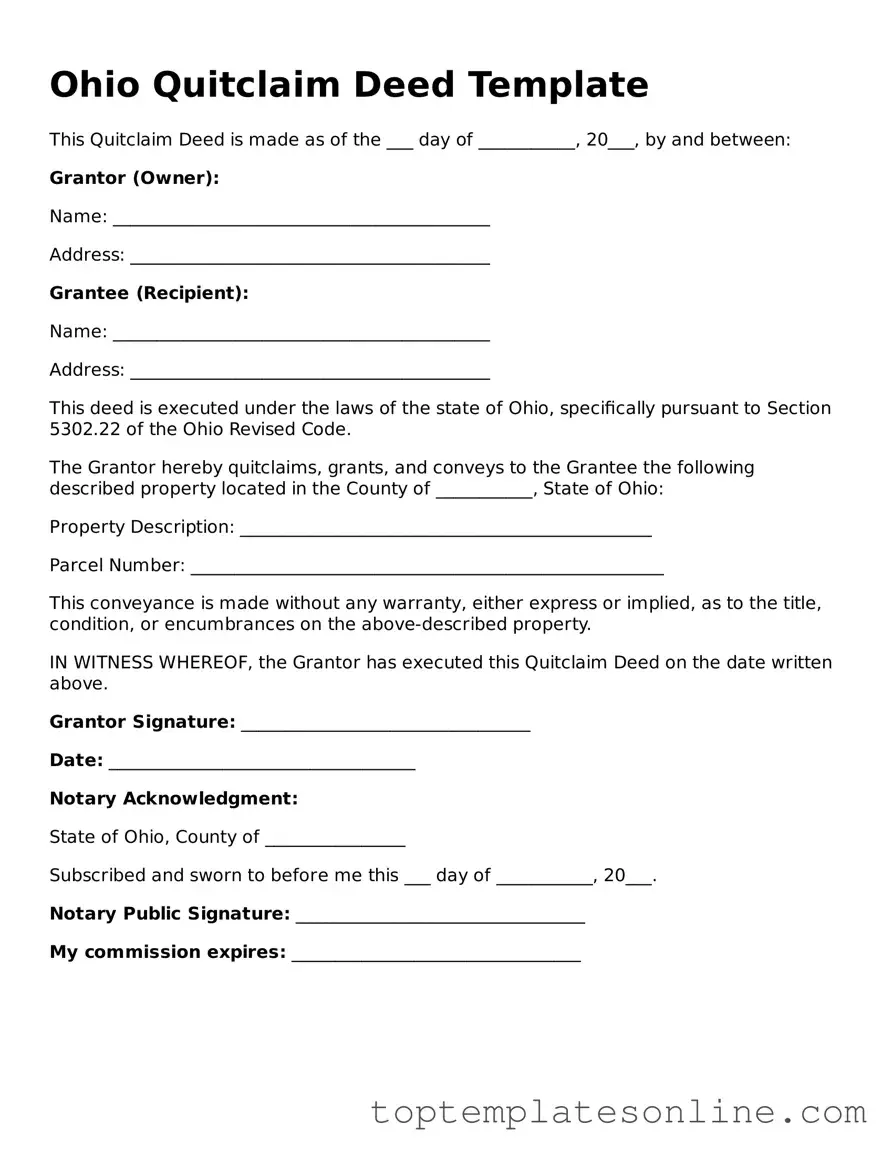In the realm of property transactions, the Ohio Quitclaim Deed form serves as a vital tool for individuals seeking to transfer ownership of real estate swiftly and efficiently. This legal document allows one party, known as the grantor, to relinquish any claim they may have to a property, thereby enabling another party, the grantee, to assume ownership. Unlike other types of deeds, a quitclaim deed does not guarantee that the grantor holds clear title to the property; instead, it conveys whatever interest the grantor possesses, if any. This makes it particularly useful in situations such as transferring property between family members, clearing up title issues, or when the parties involved have a high level of trust. However, it is essential for both parties to understand the implications of this type of deed, as it offers no warranties or protections against potential claims from third parties. Properly executing the Ohio Quitclaim Deed form requires adherence to specific state laws, including the need for notarization and recording with the county recorder's office to ensure the transfer is legally recognized. Understanding these elements can help facilitate a smoother transaction and provide peace of mind for those involved.
